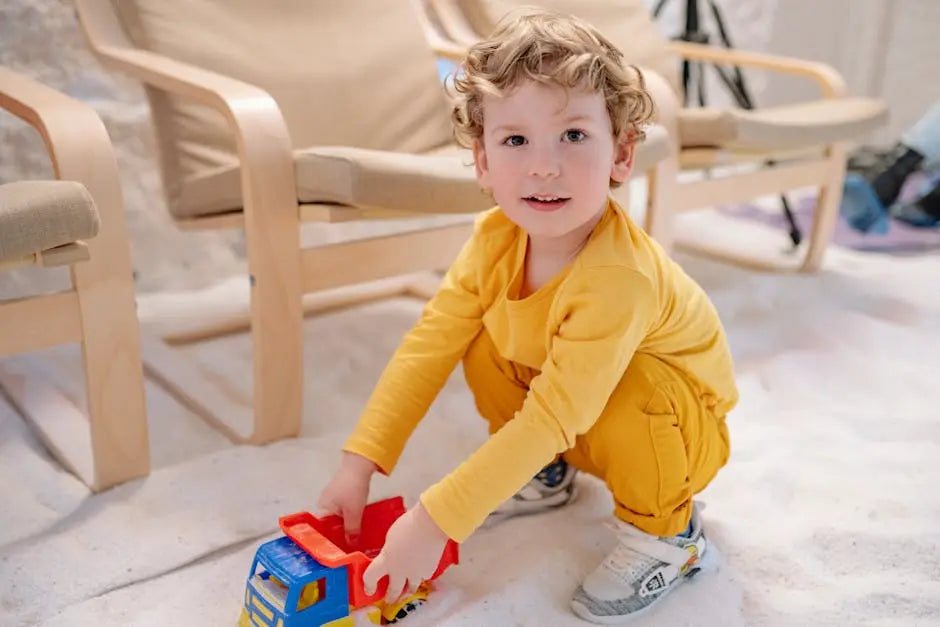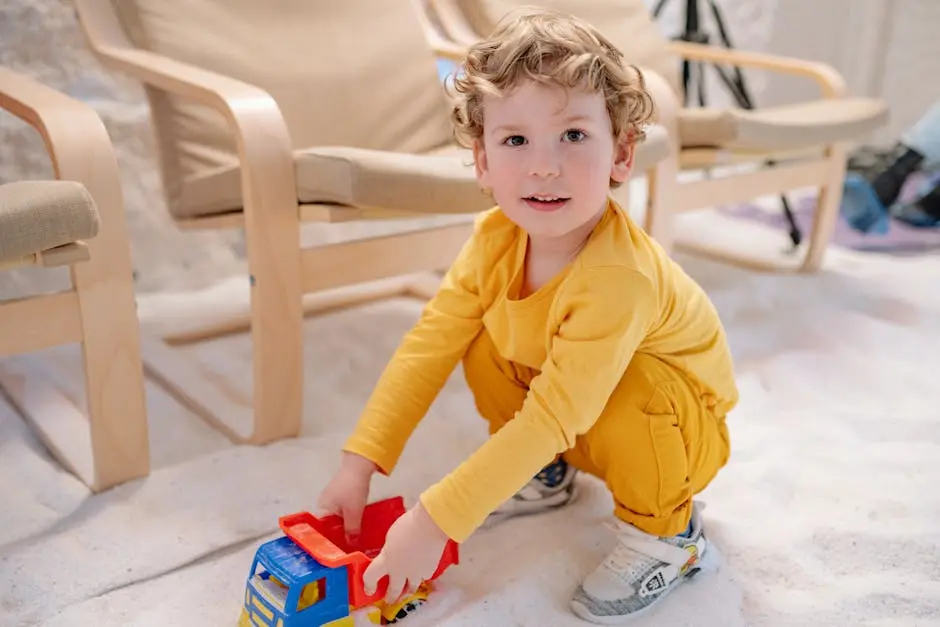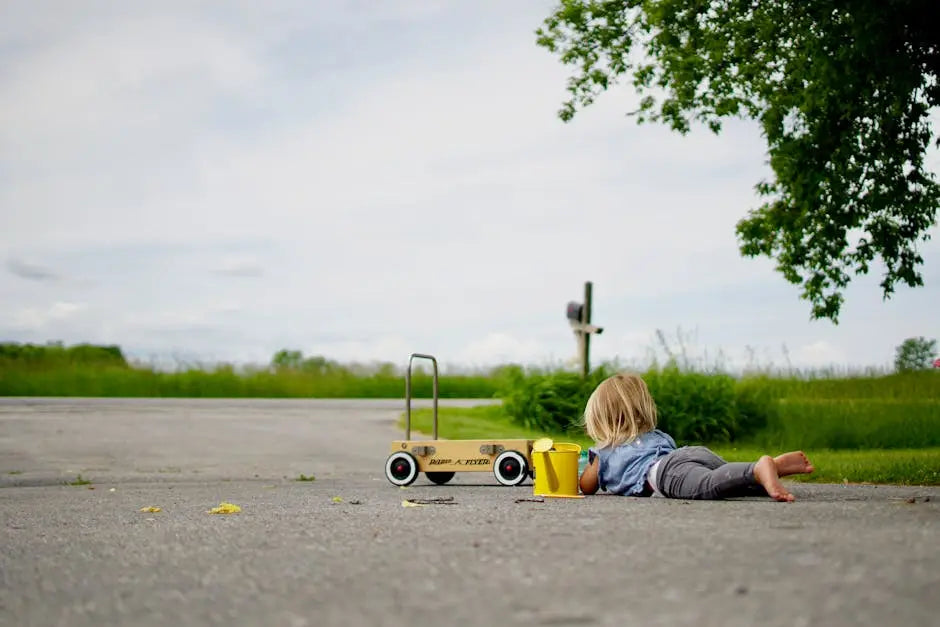Realistic toy trucks are more than just toys; they ignite creativity, spark imagination, and provide excellent learning opportunities for children. Whether it’s navigating a pretend construction site or working through simple math problems, these miniature vehicles can be gateways to fun and education. In this blog, we’ll explore a variety of engaging activities you can do with your little ones using realistic toy trucks. Let’s get rolling!
1. Building a Mini Construction Site
Set up a miniature construction scene using blocks, sand, or dirt. Let your child use their toy trucks to transport materials and play out the roles of construction workers, fostering imaginative play and teamwork.
This not only enhances motor skills but also teaches responsibility as they manage their ‘construction project.’ Adding toy workers or signs can enrich the experience and make it even more engaging. Kids will love emulating the sounds of trucks and machinery while they create their masterpieces.
What’s more, you can turn this into a learning opportunity by discussing the importance of teamwork and how construction projects require collaboration. With realistic toy trucks in hand, the lessons of planning and problem-solving emerge seamlessly, all through the lens of play.
2. Truck Racing Math Challenges
Create a racetrack and combine play with math. Have your child count laps, measure distances, or even add points to see who wins—turning racing into a fun math activity.
Imagine the excitement as they cheer their truck on, shouting out lap counts and distances! This can easily lead into lessons on addition, subtraction, and even basic multiplication as they tally racing statistics. Challenge them to keep track of how fast each truck goes, and watch as they hone their analytical skills!
Encouraging them to estimate how far each truck has traveled can lead to discussions about measurement and units, helping to solidify their understanding of the concepts while enjoying quality time. Make it a weekly challenge, and you’ll not only have fun but also strengthen their math skills along the way.
3. Nature Scavenger Hunt with Trucks
Organize a scavenger hunt in your backyard or local park. Use toy trucks to collect various natural items like leaves, stones, or flowers, encouraging exploration and a love for nature.
As your child fills up their toy trucks with treasures, turn it into an educational experience by discussing the different types of items collected and their characteristics. This fosters observational skills and ignites curiosity about the world around them.
Encourage them to create a mini-exhibit of their scavenger hunt findings—great for boosting creativity. Snap photos of their collection in action, and later, you can even create a fun scrapbook together that highlights their adventure. Such activities blend play with important learning moments about the environment.
4. Storytelling Adventures on Wheels
Encourage your child to create stories around their toy trucks. Each truck can represent a character or a setting, making storytelling an interactive and creative exercise.
Begin with a simple prompt—perhaps a truck that’s lost and needs to find its way home. As they narrate their adventures, ask questions that inspire more depth: Who are the truck’s friends? What obstacles do they face? This technique builds critical thinking and encourages imaginative storytelling.
You can enhance this activity by incorporating props or drawing storyboards. Bits of paper, crayons, and stickers can create vibrant illustrations of their journey. Not only does storytelling foster language skills, but it also allows for a wonderful bonding experience—all while playing with their favorite realistic toy trucks!
5. Learning Colors and Shapes
Use the different colors and shapes of toy trucks to teach your child about colors and shapes. Sort the trucks by color and size, making learning a fun and hands-on experience.
This simple sorting activity can evolve into various games. For instance, you could ask them to find a specific color and then build a story around that truck. Playful learning like this establishes firm groundwork in early learning frameworks while allowig your child to express their creativity.
Additionally, use real-world examples; during a drive or walk, point out different colored vehicles and shapes, linking them back to their toy trucks. This method solidifies their understanding in playful and memorable ways—turning everyday moments into educational ones.
6. Role-Playing for Communication Skills
Engage in role-playing scenarios with the trucks to help develop communication skills. Whether it’s a delivery driver or a mechanic, taking on these roles can enhance verbal skills and confidence.
Set the stage by creating a delivery-based storyline. Let them take the lead in articulating the tasks the truck must accomplish, what challenges it encounters, and how it overcomes them. This kind of imaginative role-play encourages them to express themselves and think outside the box.
Role-playing can also be a fantastic way to introduce new vocabulary. For instance, if they are pretending to be a construction worker, introduce terms related to construction, vehicles, and teamwork. This further enriches their language abilities while engaging them in creative play!
7. Physics with Truck Ramps
Craft ramps using household items to explore physics concepts like gravity and motion. As trucks roll down the ramps, children can learn about speed, direction, and force—all while having fun.
As they experiment with different ramp heights and angles, encourage them to predict where the truck will land. This stimulates logical thinking and gives a practical feel of scientific principles in action. You might even have them measure the distance traveled to reinforce math skills!
Consider discussing real-world applications of these physics concepts. Relate it back to why certain trucks are designed a certain way or how ramps are used in transportation. This approach helps connect the dots between playtime and real-life applications, for enriching educational insights.




Dejar un comentario
Este sitio está protegido por hCaptcha y se aplican la Política de privacidad de hCaptcha y los Términos del servicio.